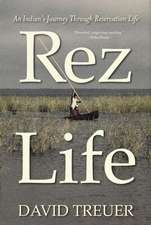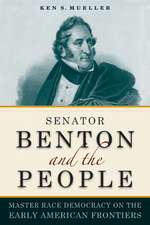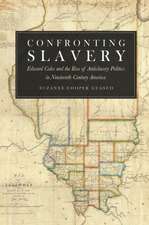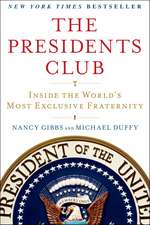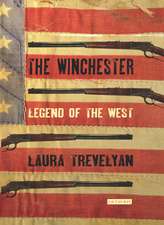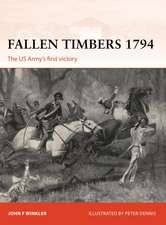Rebellious Younger Brother: Oneida Leadership and Diplomacy, 1750-1800
Autor David J. Nortonen Limba Engleză Hardback – 26 apr 2009
Throughout the colonial period, Oneida speakers promoted themselves as representatives not only for their own people but for all members of the Iroquois Six Nations Confederacy. With the arrival of Europeans, this self-appointed diplomatic role became increasingly complex. Because Oneida villages lay at the juncture of trade routes and water highways, Oneida leaders regularly dealt with traders and missionaries as well as refugee Indian peoples. When European imperial rivalries flared into war in the second half of the 18th century,
Oneida diplomats faced the dual challenges of preserving the Confederacy and securing trade and territory agreements with the co-lonial power that appeared to offer Native Americans the best deal. Oneida diplomacy failed on both fronts. While the Six Nations splintered, the British openly violated treaties. Consequently, when Britain’s colonies rebelled, Oneida leaders generally advocated joining the revolutionaries. When the fighting ended, however, those among the Oneida who had supported the patriots fared no better than other Native Americans. The government of the newly created United States conveniently forgot the Oneida contribution to the War for Independence.
In Rebellious Younger Brother, Norton focuses on the men who provided leadership for the Oneida during the turbulent decades between 1750 and 1800. In addition to charting the Oneida’s changing position within the Six Nations, he documents the ways in which authority to conduct diplomatic affairs passed between sachems and warriors and ulti-mately spread to a broad range of individuals. Readers interested in early American history and Native American Studies will appreciate this study.
Oneida diplomats faced the dual challenges of preserving the Confederacy and securing trade and territory agreements with the co-lonial power that appeared to offer Native Americans the best deal. Oneida diplomacy failed on both fronts. While the Six Nations splintered, the British openly violated treaties. Consequently, when Britain’s colonies rebelled, Oneida leaders generally advocated joining the revolutionaries. When the fighting ended, however, those among the Oneida who had supported the patriots fared no better than other Native Americans. The government of the newly created United States conveniently forgot the Oneida contribution to the War for Independence.
In Rebellious Younger Brother, Norton focuses on the men who provided leadership for the Oneida during the turbulent decades between 1750 and 1800. In addition to charting the Oneida’s changing position within the Six Nations, he documents the ways in which authority to conduct diplomatic affairs passed between sachems and warriors and ulti-mately spread to a broad range of individuals. Readers interested in early American history and Native American Studies will appreciate this study.
Preț: 360.00 lei
Nou
Puncte Express: 540
Preț estimativ în valută:
68.89€ • 71.52$ • 57.45£
68.89€ • 71.52$ • 57.45£
Carte tipărită la comandă
Livrare economică 22 martie-05 aprilie
Preluare comenzi: 021 569.72.76
Specificații
ISBN-13: 9780875803999
ISBN-10: 0875803997
Pagini: 249
Dimensiuni: 152 x 229 x 23 mm
Greutate: 0.54 kg
Ediția:1
Editura: Northern Illinois University Press
Colecția Northern Illinois University Press
ISBN-10: 0875803997
Pagini: 249
Dimensiuni: 152 x 229 x 23 mm
Greutate: 0.54 kg
Ediția:1
Editura: Northern Illinois University Press
Colecția Northern Illinois University Press
Recenzii
“Norton offers a personal and meaningful account of the Oneidas during the revolution and a structured analysis of the ways in which the war altered Oneida leadership.”—Daniel Barr, Robert Morris University
Notă biografică
David J. Norton teaches history at King’s University College, at the University of Western Ontario.
Cuprins
Table of Contents
Acknowledgments
Introduction: A Nation Apart, prior to 1750
1. The Oneida during War, in the 1750s
2. The Oneida at Peace, 1760–1765
3. The Oneida as Diplomats, 1765–1770
4. The Oneida as Neutrals, 1770–1776
5. The Oneida as Rebels, 1777–1783
6. The Oneida as Survivors, 1784–1800
Conclusion: Oneida Leadership Maintained, 1750–1800
Appendixes
1. Names of Oneida and Tuscarora Participants at Fort Stanwix Conference
2. Oneida Members Involved at the Treaty of Fort Stanwix
3. Petitioners to the State of New York to Lease Land to Peter Smith
4. Oneida Signatories to an Act Relative to the Lands Appropriated by the State of New York
5. Oneida Signers of Letter to Timothy Pickering Complaining about Samuel Kirkland
6. Oneida Overseers of East and West Ends of Kanowalohale
Biographical Information of Oneida Leaders
Notes
Selected Bibliography
Index
Introduction: A Nation Apart, prior to 1750
1. The Oneida during War, in the 1750s
2. The Oneida at Peace, 1760–1765
3. The Oneida as Diplomats, 1765–1770
4. The Oneida as Neutrals, 1770–1776
5. The Oneida as Rebels, 1777–1783
6. The Oneida as Survivors, 1784–1800
Conclusion: Oneida Leadership Maintained, 1750–1800
Appendixes
1. Names of Oneida and Tuscarora Participants at Fort Stanwix Conference
2. Oneida Members Involved at the Treaty of Fort Stanwix
3. Petitioners to the State of New York to Lease Land to Peter Smith
4. Oneida Signatories to an Act Relative to the Lands Appropriated by the State of New York
5. Oneida Signers of Letter to Timothy Pickering Complaining about Samuel Kirkland
6. Oneida Overseers of East and West Ends of Kanowalohale
Biographical Information of Oneida Leaders
Notes
Selected Bibliography
Index
Descriere
Throughout the colonial period, Oneida speakers promoted themselves as representatives not only for their own people but for all members of the Iroquois Six Nations Confederacy. With the arrival of Europeans, this self-appointed diplomatic role became increasingly complex. Because Oneida villages lay at the juncture of trade routes and water highways, Oneida leaders regularly dealt with traders and missionaries as well as refugee Indian peoples. When European imperial rivalries flared into war in the second half of the 18th century,
Oneida diplomats faced the dual challenges of preserving the Confederacy and securing trade and territory agreements with the co-lonial power that appeared to offer Native Americans the best deal. Oneida diplomacy failed on both fronts. While the Six Nations splintered, the British openly violated treaties. Consequently, when Britain’s colonies rebelled, Oneida leaders generally advocated joining the revolutionaries. When the fighting ended, however, those among the Oneida who had supported the patriots fared no better than other Native Americans. The government of the newly created United States conveniently forgot the Oneida contribution to the War for Independence.
In Rebellious Younger Brother, Norton focuses on the men who provided leadership for the Oneida during the turbulent decades between 1750 and 1800. In addition to charting the Oneida’s changing position within the Six Nations, he documents the ways in which authority to conduct diplomatic affairs passed between sachems and warriors and ulti-mately spread to a broad range of individuals. Readers interested in early American history and Native American Studies will appreciate this study.
Oneida diplomats faced the dual challenges of preserving the Confederacy and securing trade and territory agreements with the co-lonial power that appeared to offer Native Americans the best deal. Oneida diplomacy failed on both fronts. While the Six Nations splintered, the British openly violated treaties. Consequently, when Britain’s colonies rebelled, Oneida leaders generally advocated joining the revolutionaries. When the fighting ended, however, those among the Oneida who had supported the patriots fared no better than other Native Americans. The government of the newly created United States conveniently forgot the Oneida contribution to the War for Independence.
In Rebellious Younger Brother, Norton focuses on the men who provided leadership for the Oneida during the turbulent decades between 1750 and 1800. In addition to charting the Oneida’s changing position within the Six Nations, he documents the ways in which authority to conduct diplomatic affairs passed between sachems and warriors and ulti-mately spread to a broad range of individuals. Readers interested in early American history and Native American Studies will appreciate this study.


